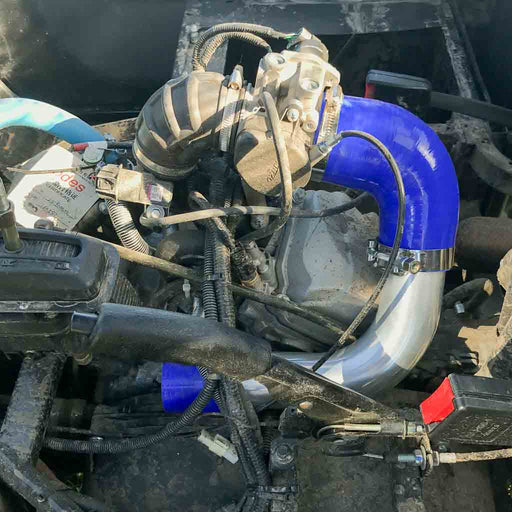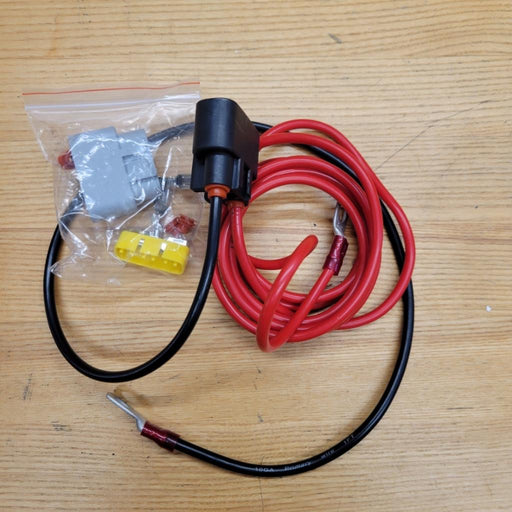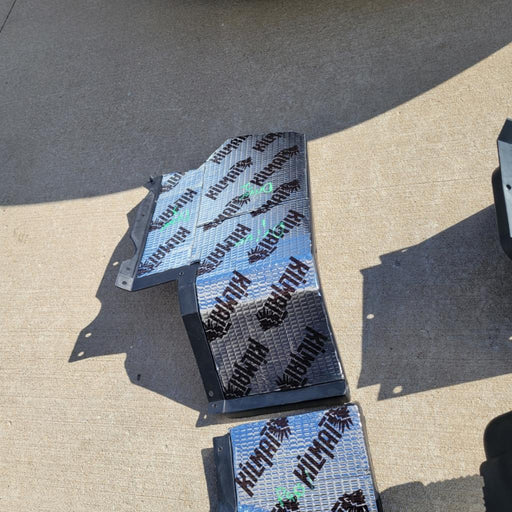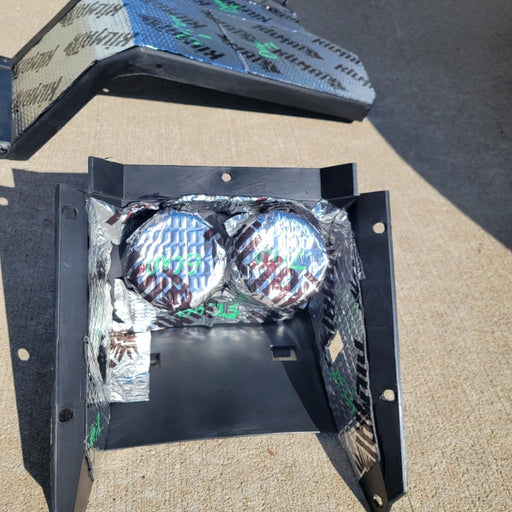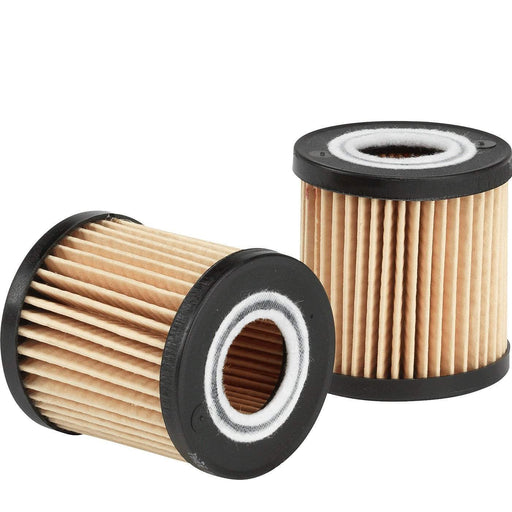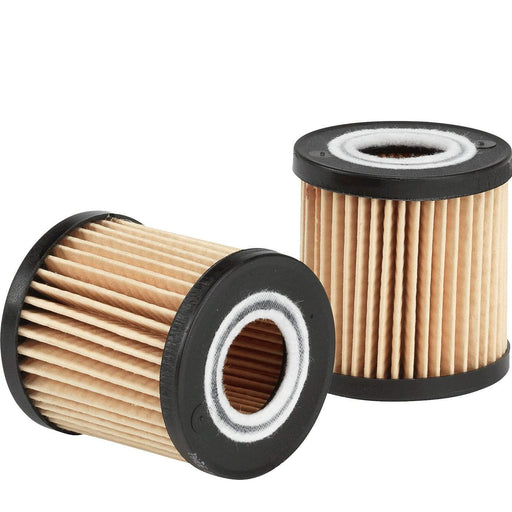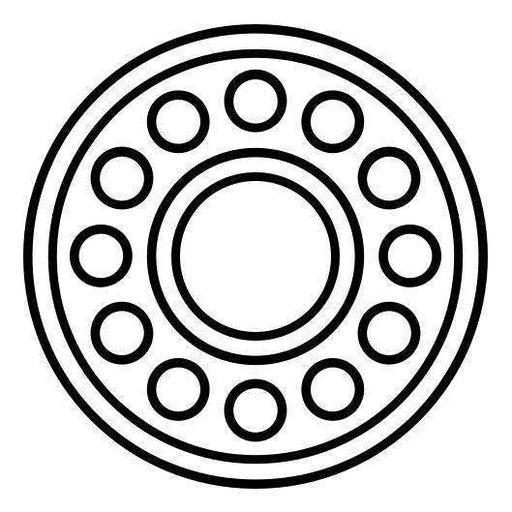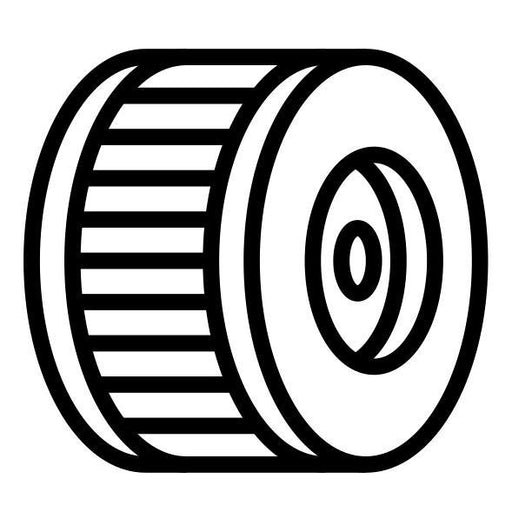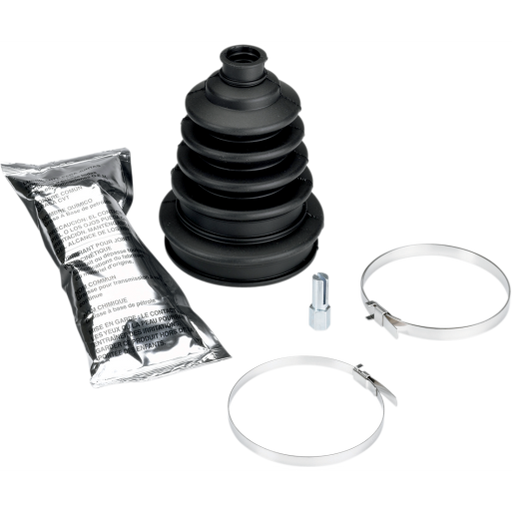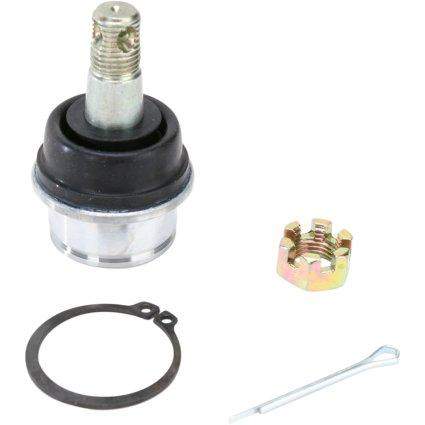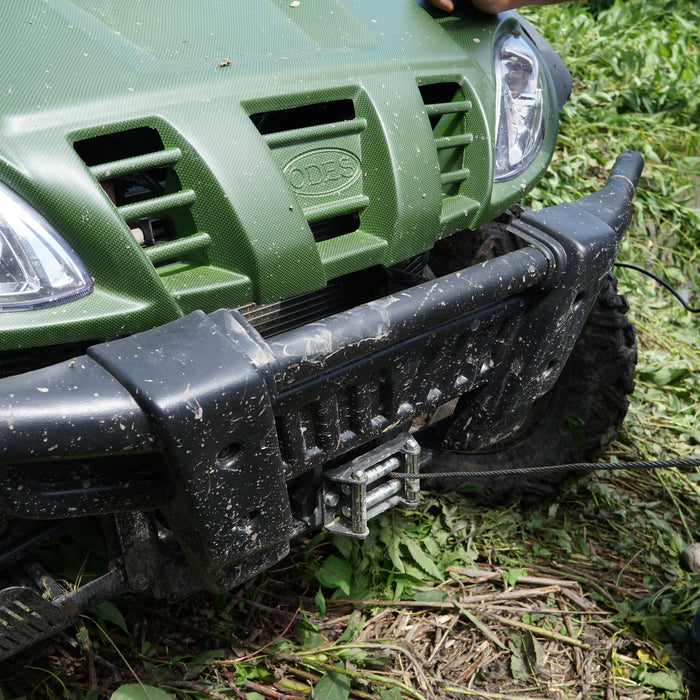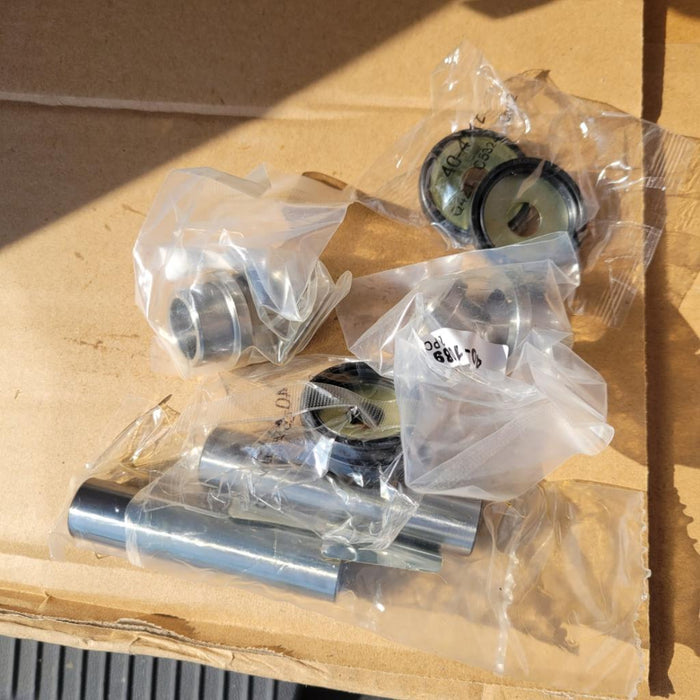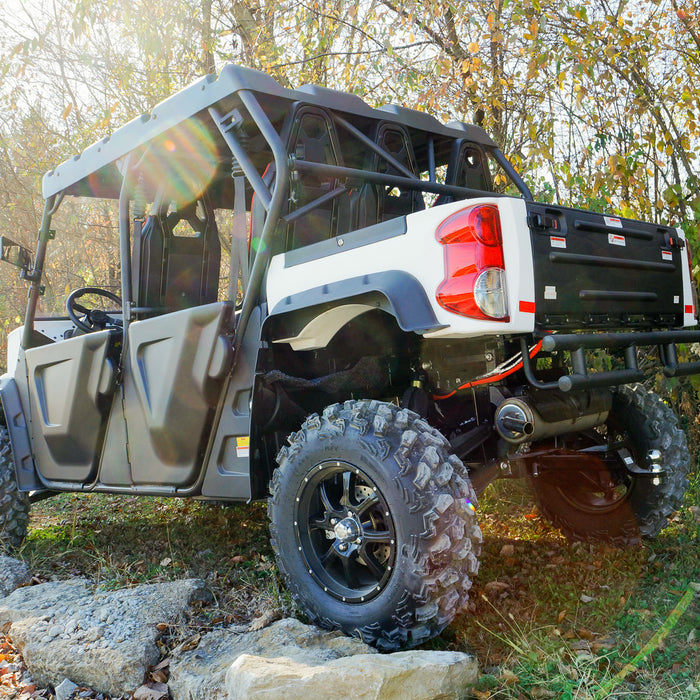
ATV Battery Types and Maintenance Tips
Know Your Battery
First things first, you need to know what type of battery you are dealing with. This will make a difference in where and how you charge the battery. An ATV battery can be one of two types: a wet cell or an absorbed glass mat (AGM). The wet cell battery has been used for a very long time. A wet cell battery is also known by several other names; typically involving something wet, such as flooded battery or lead acid battery. This used to be the most common battery type but in the last few years they have started being replaced with AGM batteries. If you have a wet cell battery, the first giveaway will be the fill caps on the top.
After a long day of riding through mud, a good clean up is in order. It's not uncommon for us to do a quick spray, throw the batteries on the charger, and bring them out again in the morning for a more thorough cleaning. So if you're batteries don't look brand new, don't worry. You won't get any judgement from us!
The next clue that you have a wet cell battery will be the vent tube that lets the battery breath. Wet cell batteries normally have a tube running out of the battery compartment. If you determine that you have a wet cell battery, you will want to charge it in a well-ventilated area. The charging will cause the battery to heat up, which will produce a gas. This is normal but because the gasses are flammable, you don’t want them contained in a small area. You can use any charger on these batteries but as we pointed out back here, you do not want to quick charge these batteries. To keep from overheating and calcification, a 5amp charge is as high as you want to go. For example, the average ATV battery is 6amp hours. At a 5amp charge, it would take 1.56 hours to be fully charged. As the amperage increases, the time drops but the amount of heat rises. The dramatic rise in heat is what causes the battery to boil, which causes the acid to evaporate leading to calcification. (As well as smelling really really bad.) With a quick charge, not only is the acid being wasted, but the build up of calcification can cause the battery to short internally. If you are unsure what amperage and how long to charge your battery, try this charging calculator. (For reference, 1 amp = 1000 milliamp) After you have calculated the rate for your battery, charge accordingly, and let the battery rest. If it still will not stay around 12.6 volts, the battery is probably bad. (Remember, at this point we're still talking about a wet cell battery.) I would still recommend you have it checked at your local battery supplier. If you do need a new battery, and you purchase another wet cell, it will normally not be filled. You will need to add the acid and charge the battery. Some sellers will do this for you so be sure to ask if they will. If you do have to fill the battery yourself, make sure you do not over fill or under fill.
If you determine that you have a wet cell battery, you will want to charge it in a well-ventilated area. The charging will cause the battery to heat up, which will produce a gas. This is normal but because the gasses are flammable, you don’t want them contained in a small area. You can use any charger on these batteries but as we pointed out back here, you do not want to quick charge these batteries. To keep from overheating and calcification, a 5amp charge is as high as you want to go. For example, the average ATV battery is 6amp hours. At a 5amp charge, it would take 1.56 hours to be fully charged. As the amperage increases, the time drops but the amount of heat rises. The dramatic rise in heat is what causes the battery to boil, which causes the acid to evaporate leading to calcification. (As well as smelling really really bad.) With a quick charge, not only is the acid being wasted, but the build up of calcification can cause the battery to short internally. If you are unsure what amperage and how long to charge your battery, try this charging calculator. (For reference, 1 amp = 1000 milliamp) After you have calculated the rate for your battery, charge accordingly, and let the battery rest. If it still will not stay around 12.6 volts, the battery is probably bad. (Remember, at this point we're still talking about a wet cell battery.) I would still recommend you have it checked at your local battery supplier. If you do need a new battery, and you purchase another wet cell, it will normally not be filled. You will need to add the acid and charge the battery. Some sellers will do this for you so be sure to ask if they will. If you do have to fill the battery yourself, make sure you do not over fill or under fill.

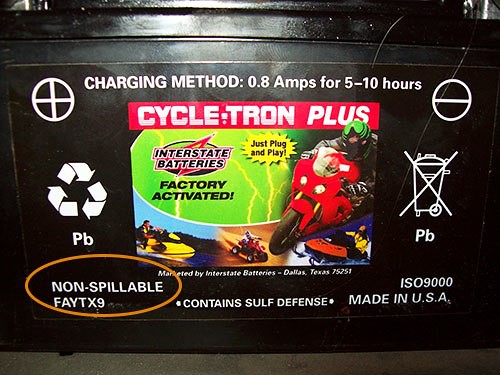
Maintain Your Battery
Now that you know the differences between the types of batteries and the best way to charge them both, I want to talk about how to keep your battery fresh and ready for whenever you are. In my other post about Spring PMCS, I talked about our battery maintainer that we use regularly.
I highly recommend a battery maintainer and I love our model. It is a very simple and plug and play. Most come with a hard mounted plug in that attaches to your ATV. Then when you get back from riding all you have to do is plug your bike in and you’re done.

If you do not want to mount the other ends on the ATV, most models also come with a set of clamps to put on the battery temporarily.

-
Original price $ 159.99 - Original price $ 204.99Original price$ 159.99 - $ 204.99$ 159.99 - $ 204.99Current price $ 159.99
Air Filter Relocation Kit for ODES UTVS
Scooter's PowersportsIn stockOur very own Air Filter Relocation kit for ODES UTVS. Designed and manufactured by Scooter's Powersports. Unlike some ODES Air Filter Relocation K...
View full detailsOriginal price $ 159.99 - Original price $ 204.99Original price$ 159.99 - $ 204.99$ 159.99 - $ 204.99Current price $ 159.99 -
Original price $ 40.00 - Original price $ 40.00Original price$ 40.00$ 40.00 - $ 40.00Current price $ 40.00
Voltage Regulator Relocation Kit for ODES UTVS
Scooter's PowersportsDesigned to move the voltage regulator from under the hood to under the seat. Requested by you and built by Scooter's Powersports. Allows for elimi...
View full detailsOriginal price $ 40.00 - Original price $ 40.00Original price$ 40.00$ 40.00 - $ 40.00Current price $ 40.00 -
Original price $ 129.99 - Original price $ 159.99Original price$ 129.99 - $ 159.99$ 129.99 - $ 159.99Current price $ 129.99
Pre-Cut Sound Proof Matting for ODES UTVS
Scooter's PowersportsIf the noise inside the cab of your ODES UTV has ever bothered you, this. is your solution. Now you can get one of our best selling shop services a...
View full detailsOriginal price $ 129.99 - Original price $ 159.99Original price$ 129.99 - $ 159.99$ 129.99 - $ 159.99Current price $ 129.99 -
 View all ODES UTV Performance mods
View all ODES UTV Performance mods
-
 ODES UTVS best sellers
ODES UTVS best sellers -
Original price $ 38.49 - Original price $ 55.99Original price$ 38.49 - $ 55.99$ 38.49 - $ 55.99Current price $ 38.49
ODES Oil Change Kit for 800 and 1000 Engines
Scooter's PowersportsODES Industries recommends an engine oil change at 25-hours of run time or 1000 miles. (We won’t tell if you turn that down to once every 50-hours ...
View full detailsOriginal price $ 38.49 - Original price $ 55.99Original price$ 38.49 - $ 55.99$ 38.49 - $ 55.99Current price $ 38.49 -
Original price $ 7.99 - Original price $ 7.99Original price$ 7.99$ 7.99 - $ 7.99Current price $ 7.99
ODES Oil Filter - High-Performance
Not specifiedHigh-performance aftermarket ODES oil filter. Compatible with 800cc and 1000cc ODES engines. Be sure to select your make and model before adding to...
View full detailsOriginal price $ 7.99 - Original price $ 7.99Original price$ 7.99$ 7.99 - $ 7.99Current price $ 7.99 -
Original price $ 49.99 - Original price $ 62.00Original price$ 49.99 - $ 62.00$ 49.99 - $ 62.00Current price $ 49.99
Pivot Works Wheel Bearing Kit for ODES - Lifetime Replacement!
Pivot WorksIn stockPivot Works wheel bearing kit for 2012+ 800cc and 1000cc UTVs from ODES Industries. Fitment includes the Short Travel (Standard) suspension and the...
View full detailsOriginal price $ 49.99 - Original price $ 62.00Original price$ 49.99 - $ 62.00$ 49.99 - $ 62.00Current price $ 49.99 -
Original price $ 159.99 - Original price $ 204.99Original price$ 159.99 - $ 204.99$ 159.99 - $ 204.99Current price $ 159.99
Air Filter Relocation Kit for ODES UTVS
Scooter's PowersportsIn stockOur very own Air Filter Relocation kit for ODES UTVS. Designed and manufactured by Scooter's Powersports. Unlike some ODES Air Filter Relocation K...
View full detailsOriginal price $ 159.99 - Original price $ 204.99Original price$ 159.99 - $ 204.99$ 159.99 - $ 204.99Current price $ 159.99 -
Original price $ 40.99Original price $ 40.99 - Original price $ 40.99Original price $ 40.99Current price $ 36.95$ 36.95 - $ 36.95Current price $ 36.95
ODES 800cc Air Filter | 21040401001
ODES IndustriesOut of stockOEM air filter for ODES 800cc engines. Vehicle Fitment This part is compatible with the following vehicles 2012+ ODES Dominator 800 2015+ ODES Dom...
View full detailsOriginal price $ 40.99Original price $ 40.99 - Original price $ 40.99Original price $ 40.99Current price $ 36.95$ 36.95 - $ 36.95Current price $ 36.95Sold out -
Original price $ 18.99 - Original price $ 18.99Original price$ 18.99$ 18.99 - $ 18.99Current price $ 18.99
Fast Boot Kit
MooseIn stockExtremely heavy duty CV boot that fits virtually all ATVs and UTVs. Additional rib to allow boot to expand for larger joints Improved clamp retain...
View full detailsOriginal price $ 18.99 - Original price $ 18.99Original price$ 18.99$ 18.99 - $ 18.99Current price $ 18.99 -
Original price $ 29.99 - Original price $ 29.99Original price$ 29.99$ 29.99 - $ 29.99Current price $ 29.99
ODES Ball Joint Kit
Scooter's PowersportsODES ball joint kit for 800cc and 1000cc ODES UTVs. ODES Ball Joint Kit Includes (1) Ball joint (1) Circlip (1) Cotter pin (1) Nut Each kit provi...
View full detailsOriginal price $ 29.99 - Original price $ 29.99Original price$ 29.99$ 29.99 - $ 29.99Current price $ 29.99


